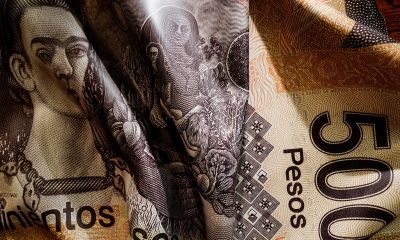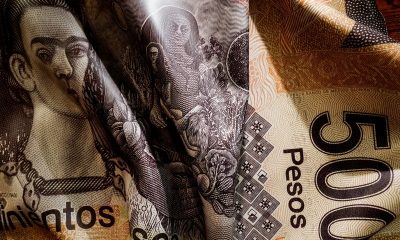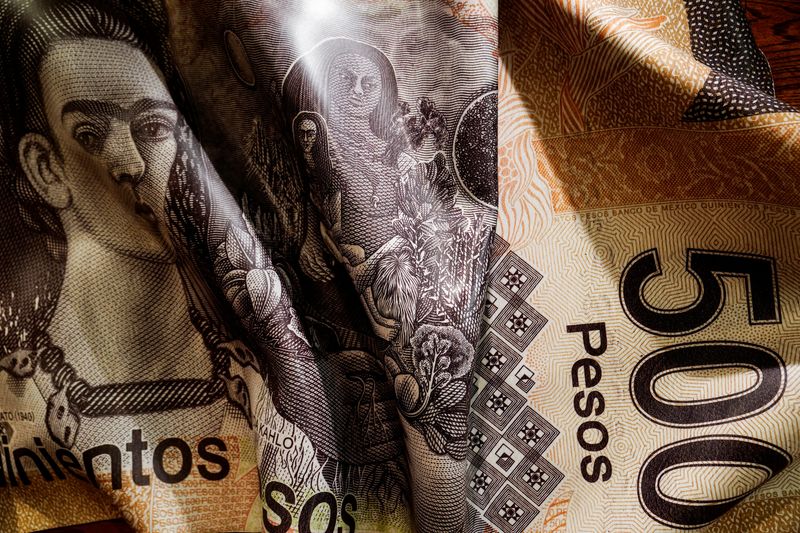Forex
Dollar gains after Powell warns on rates, yen at one-week low
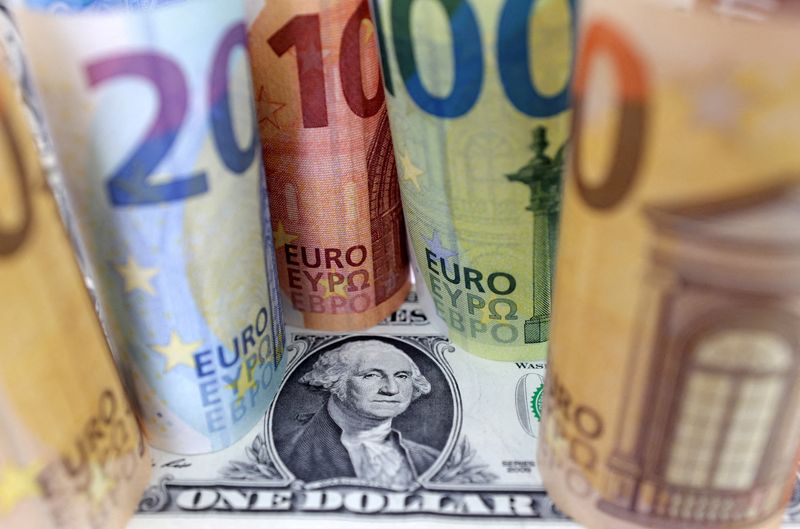
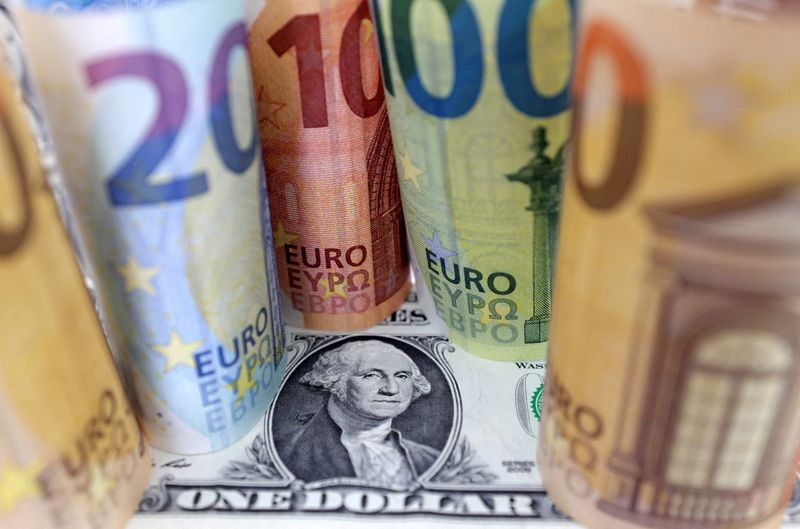
© Reuters. FILE PHOTO: U.S. Dollar and Euro banknotes are seen in this illustration taken July 17, 2022. REUTERS/Dado Ruvic/Illustration/File Photo
By Karen Brettell
NEW YORK (Reuters) – The dollar gained on Thursday and hit a one-week high against the Japanese yen after Federal Reserve Chair Jerome Powell said that Fed policymakers are “are not confident” that interest rates are yet high enough to finish the battle with inflation.
The was last up 0.35% on the day at 105.86. The euro fell 0.37% to $1.0671. The dollar gained 0.21% to 151.29 Japanese yen, the highest since Nov. 1.
Traders remained on alert for potential intervention to shore up the struggling Japanese currency, which is near a one-year low of 151.74 reached last week.
The dollar’s rally in the wake of Powell’s comments also came after a brief spike higher on the back of a weak auction of 30-year Treasury bonds, which sent yields higher across Treasury maturities.
“I don’t think Powell said anything significantly new, but I think the markets took his comments as somewhat hawkish. But I also think the rates market was still somewhat jittery after the auction so higher yields was the path of least resistance,” said Vassili Serebriakov, an FX strategist at UBS in New York.
The dollar benefited from the run-up in Treasury yields over the past few months, but dropped last week as yields also fell sharply. This came after Powell was interpreted as striking a dovish tone after the Fed’s two-day meeting, with softer-then-expected jobs data on Friday adding to a belief that the Fed has finished hiking interest rates.
Some Fed officials this week have adopted a more hawkish outlook and stressed that further rate hikes remained on the table if inflation doesn’t continue to come down closer to the Fed’s 2% annual target.
“They don’t think their job in inflation is done. I think there is some divergence of opinion in terms of whether they should hike more. It seems that the base case is that they don’t, they want to be patient and assess how the impact of hikes has translated into the economy,” said Serebriakov.
Richmond Fed President Thomas Barkin said on Thursday said that while there’s been “real progress” on inflation, he is still unsure if the U.S. central bank will need to push its policy rate higher to finish the job.
Fed Bank of St. Louis acting leader Kathleen O’Neill Paese also said Thursday she’s concerned those watching the central bank may not be fully taking on board its commitment to lowering inflation.
Fed funds futures traders are now pricing in a 25% chance of an additional hike by January, up from 19% on Thursday morning but down from 28% a week ago, according to the CME Group’s FedWatch Tool.
Traders are weighing whether the greenback is likely to weaken against other major currencies if the U.S. economy slows as expected, or if even more dour outlooks for growth in other regions will keep the dollar bid.
“The market is increasingly looking at growth rather than interest rate differentials as the driver in the currency market and increasingly the market is concluding that it’s only the U.S. that can continue to grow with rates in the 5% range,” said Adam Button, chief currency analyst at ForexLive in Toronto.
Meanwhile traders will remain focused on the Japanese yen as it holds above the 150 level against the U.S. dollar where Japanese authorities are seen as possibly stepping in.
Concerns over a possible intervention in the currency pair has also led some investors to bet on further yen weakness against the euro instead of the greenback. The single currency reached a 15-year top of 161.80 on Thursday.
The Australian dollar fell to a one-week low of $0.6364 on Thursday. It has tumbled since the Reserve Bank of Australia on Tuesday raised interest rates to a 12-year high but played down the probability of further increases.
In cryptocurrencies, reached $37,978, the highest since May 2022, before falling back to $36,326.
========================================================
Currency bid prices at 3:06PM (2006 GMT)
Description RIC Last U.S. Close Pct Change YTD Pct High Bid Low Bid
Previous Change
Session
Dollar index 105.8600 105.5000 +0.35% 2.290% +105.9700 +105.3700
Euro/Dollar $1.0671 $1.0710 -0.37% -0.42% +$1.0726 +$1.0660
Dollar/Yen 151.2850 150.9650 +0.21% +15.39% +151.3800 +150.7700
Euro/Yen 161.43 161.67 -0.15% +15.06% +161.7900 +161.3700
Dollar/Swiss 0.9033 0.8993 +0.47% -2.29% +0.9041 +0.8990
Sterling/Dollar $1.2225 $1.2285 -0.48% +1.09% +$1.2308 +$1.2213
Dollar/Canadian 1.3808 1.3792 +0.14% +1.93% +1.3816 +1.3747
Aussie/Dollar $0.6373 $0.6402 -0.50% -6.55% +$0.6428 +$0.6364
Euro/Swiss 0.9638 0.9628 +0.10% -2.60% +0.9648 +0.9620
Euro/Sterling 0.8727 0.8716 +0.13% -1.32% +0.8729 +0.8694
NZ $0.5906 $0.5912 -0.10% -6.99% +$0.5954 +$0.5901
Dollar/Dollar
Dollar/Norway 11.2010 11.1710 +0.47% +14.36% +11.2210 +11.1100
Euro/Norway 11.9570 11.9598 -0.02% +13.94% +11.9851 +11.9020
Dollar/Sweden 10.9122 10.8906 -0.19% +4.85% +10.9190 +10.8300
Euro/Sweden 11.6446 11.6670 -0.19% +4.44% +11.6745 +11.6150

 Forex3 years ago
Forex3 years agoForex Today: the dollar is gaining strength amid gloomy sentiment at the start of the Fed’s week

 Forex3 years ago
Forex3 years agoUnbiased review of Pocket Option broker

 Forex3 years ago
Forex3 years agoDollar to pound sterling exchange rate today: Pound plummeted to its lowest since 1985

 Forex3 years ago
Forex3 years agoHow is the Australian dollar doing today?

 Cryptocurrency3 years ago
Cryptocurrency3 years agoWhat happened in the crypto market – current events today

 World3 years ago
World3 years agoWhy are modern video games an art form?

 Commodities3 years ago
Commodities3 years agoCopper continues to fall in price on expectations of lower demand in China

 Economy3 years ago
Economy3 years agoCrude oil tankers double in price due to EU anti-Russian sanctions

